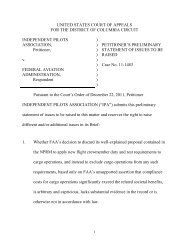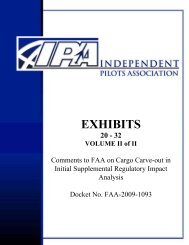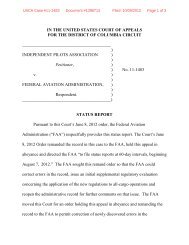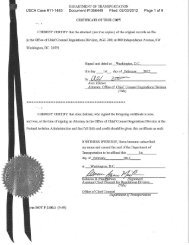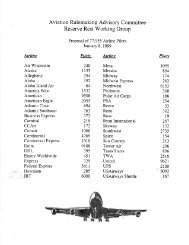Submission - Independent Pilots Association
Submission - Independent Pilots Association
Submission - Independent Pilots Association
You also want an ePaper? Increase the reach of your titles
YUMPU automatically turns print PDFs into web optimized ePapers that Google loves.
The purpose of any FRMS is to ensure that flightcrew members are sufficiently alert sothat they can operate to a satisfactory level of performance and safety under allcircumstances.A FRMS supplements prescribed flight and duty time regulations and other validatedindependent scientific research based software tools by applying safety managementprinciples and processes to proactively and continuously manage fatigue risk through apartnership approach requiring shared responsibility among management and crewmembers. These changes to the prescriptive rules must be operationally validated priorto acceptance. It can therefore only operate in circumstances where all stakeholders,particularly the pilot body, support the operation of a FRMS. Accordingly, an openreporting system and non-punitive working environment, sometimes referred to as a“just culture” is a prerequisite within the organization for a FRMS to exist because crewfeedback is an essential component of the program. All successful safety programssuch as ASAP and FOQA are based on a three-way partnership and FRMS should bethe same. A FRMS must specify the prescriptive regulatory scheme upon which it isbased. In the event of suspension, termination or revocation of FRMS, the carrier’saffected operations shall revert to the baseline prescriptive scheme.FRMS is intended to be used to supplement prescriptive fatigue managementregulations as a means of ensuring that flight crew remain sufficiently alert during dutyto achieve a satisfactory level of operational performance and hence safety under allcircumstances. A well developed and managed FRMS integrates operational andscientific data such as physiological and behavioral measures in the scheduling of crewmembers by providing a balance between duty types, crew rest and recovery. In thecase of extended flight duty periods with augmented crew, such as ultra long range(ULR) operations, the planning of in-flight rest can be optimized.FRMS must be based on a partnership approach for which there is agreement betweenthe operator, regulator and pilot body. As FRMS is a new emerging concept, aMemorandum of Understanding between principle stakeholders should form the basis ofinitial agreement and be the subject to on-going periodic review based on assessmentof the effectiveness of the program in achieving its stated goals. The Memorandum ofUnderstanding must include a mechanism for the representatives of the stakeholdingpilots to suspend or terminate participation in the operator’s FRMS in the event that therepresentatives of the stakeholding pilots determine in their discretion that the FRMSprogram’s safety purpose is not being met.Pilot representatives, either from, where such a body exists, an established organizationindependent of the company, or where such a body does not exist, independentlyelected directly by the pilots, must be included as members of the operator’s FatigueManagement Steering Group. This committee will be fully involved in the initialdevelopment of the FRMS program, and shall be fully and directly the on-goingoversight of the operator’s FRMS program including the development of modifications ofthe FRMS to meet the program’s safety purpose.9



